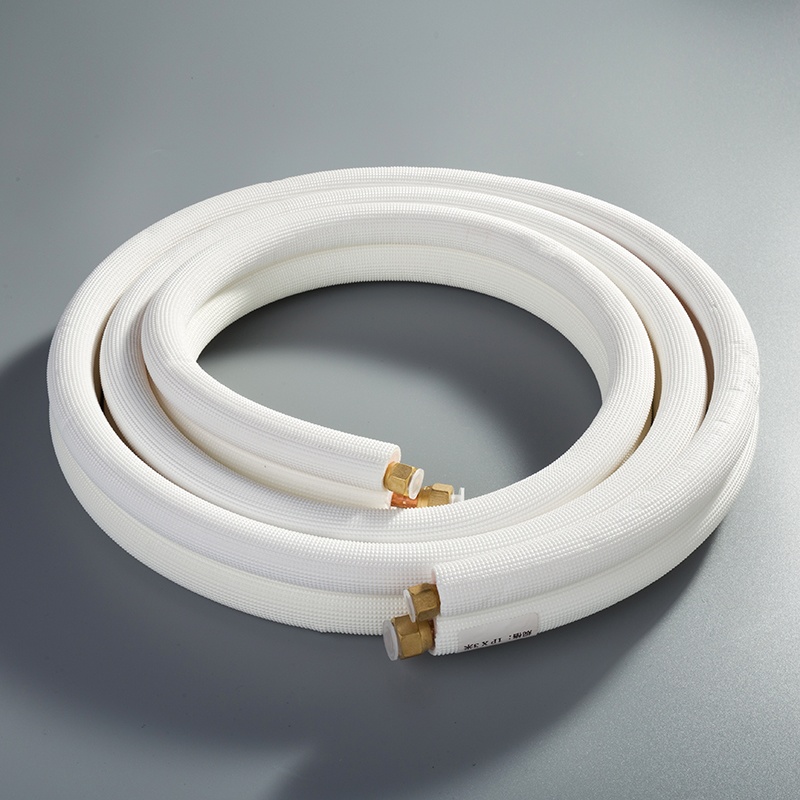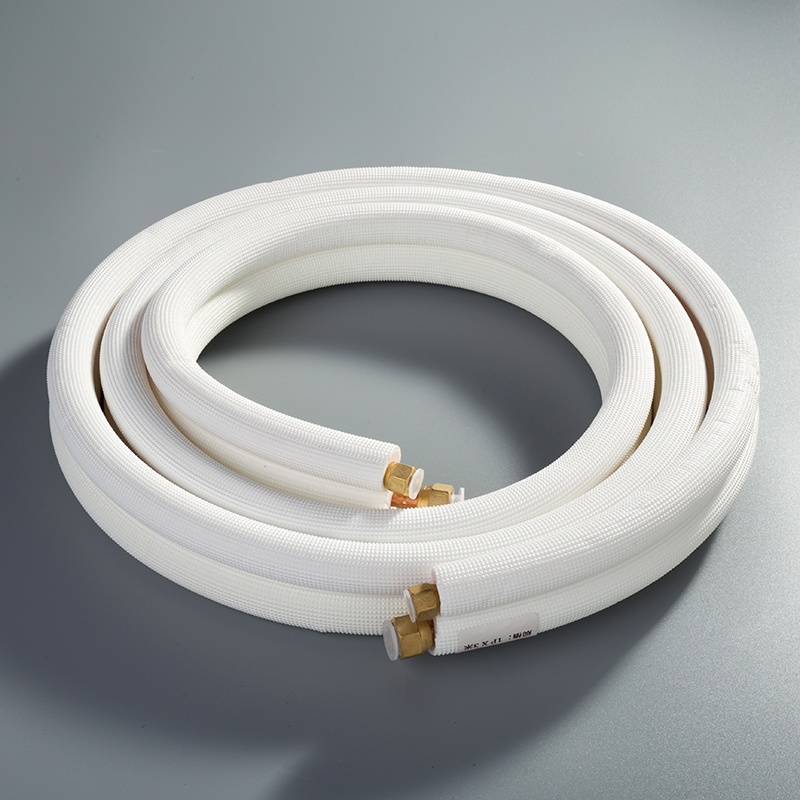Top-Rated Copper Pipes for Air Conditioning Installation

High-quality copper pipes play a crucial role in air conditioning installations. Copper pipes offer unmatched durability, corrosion resistance, and thermal conductivity. These attributes ensure optimal performance and longevity for HVAC systems. Investing in premium copper pipes minimizes the risk of leaks and reduces maintenance costs. Reliable copper pipes withstand varying temperatures, providing consistent performance. Prioritizing high-quality materials enhances the efficiency and lifespan of air conditioning systems.
Write a 'Review' blog post on 'Best Air Conditioning Copper Pipes for Installation' to explore top-rated options.
Importance of High-Quality Copper Pipes

Benefits of Using Copper Pipes
Durability and Longevity
Copper pipes offer exceptional durability and longevity. High-quality copper pipes can last over 50 years under ideal conditions. This longevity ensures a reliable and long-term investment for air conditioning systems. The robust nature of copper pipes minimizes the need for frequent replacements, saving time and money.
Thermal Conductivity
Copper pipes excel in thermal conductivity. This property allows efficient heat transfer, which enhances the performance of air conditioning systems. Efficient thermal conductivity ensures faster cooling and consistent temperature regulation. This results in improved energy efficiency and reduced operational costs.
Corrosion Resistance
Copper pipes possess excellent corrosion resistance. This attribute prevents rust and degradation over time. Corrosion resistance ensures the integrity of the piping system, reducing the likelihood of leaks and failures. Reliable performance and minimal maintenance requirements make copper pipes a preferred choice for air conditioning installations.
Risks of Using Low-Quality Pipes
Potential for Leaks
Low-quality pipes often lead to potential leaks. Inferior materials and poor manufacturing standards contribute to weak points in the piping system. These weak points increase the risk of leaks, causing damage to the air conditioning system and surrounding areas. Frequent leaks necessitate costly repairs and replacements.
Reduced Efficiency
Using low-quality pipes results in reduced efficiency. Poor thermal conductivity and inadequate insulation hinder the performance of the air conditioning system. Reduced efficiency leads to higher energy consumption and increased utility bills. Investing in high-quality copper pipes ensures optimal system performance and energy savings.
Higher Maintenance Costs
Low-quality pipes incur higher maintenance costs. Frequent issues such as leaks, corrosion, and blockages require regular maintenance and repairs. These recurring problems escalate maintenance expenses over time. High-quality copper pipes, with their durability and reliability, significantly reduce maintenance needs and associated costs.
Criteria for Selecting Top-Rated Copper Pipes
Material Quality
Purity of Copper
High-quality copper pipes require a high purity level. Pure copper ensures optimal performance and longevity. Impurities can weaken the pipe structure, leading to potential failures. Manufacturers should use copper with a purity level of at least 99.9%. This level of purity guarantees the best results for air conditioning installations.
Manufacturing Standards
Manufacturing standards play a crucial role in the quality of copper pipes. Reputable manufacturers adhere to strict guidelines. These guidelines ensure consistency and reliability. High manufacturing standards reduce the risk of defects and improve overall performance. Companies like Mueller Copper Tube and United States Brass and Copper are known for their stringent manufacturing processes.
Pipe Specifications
Diameter and Thickness
The diameter and thickness of copper pipes impact their performance. Proper sizing ensures efficient airflow and cooling. Thicker walls provide better durability and pressure resistance. Type K copper pipes have the thickest walls, making them ideal for high-pressure applications. Type L pipes offer a balance between cost and durability, suitable for most HVAC systems.
Pressure Ratings
Pressure ratings indicate the maximum pressure a pipe can handle. High-pressure ratings ensure the pipe can withstand the demands of air conditioning systems. Type L pipes have higher pressure ratings compared to Type M pipes. Choosing the right pressure rating prevents system failures and ensures long-term reliability.
Certifications and Standards
Industry Certifications
Industry certifications validate the quality of copper pipes. Certifications from organizations like the American Society for Testing and Materials (ASTM) ensure compliance with industry standards. Certified pipes undergo rigorous testing for performance and safety. Using certified pipes guarantees reliability and peace of mind.
Compliance with Regulations
Compliance with regulations ensures that copper pipes meet legal and safety requirements. Regulatory bodies set standards for materials, manufacturing, and performance. Adhering to these regulations prevents legal issues and ensures safe installations. KME provides top-notch solutions that comply with all relevant regulations.
Choosing top-rated copper pipes involves careful consideration of material quality, specifications, and certifications. Investing in high-quality pipes enhances the efficiency and lifespan of air conditioning systems.
Write a 'Review' blog post on 'Best Air Conditioning Copper Pipes for Installation'
Product 1: Mueller Streamline Copper Tube
Features
Type L copper pipe
High purity level of 99.9%
Adheres to ASTM B88 standards
Available in various diameters and lengths
Excellent thermal conductivity and corrosion resistance
Pros and Cons
Pros:
Exceptional durability and longevity
High-pressure rating suitable for HVAC systems
Reliable performance with minimal maintenance
Widely available and easy to source
Cons:
Higher cost compared to other brands
Requires professional installation for optimal performance
Product 2: KME Copper Tubes
Features
Type K copper pipe
Thickest walls among all copper pipe types
Complies with industry regulations and certifications
Superior corrosion resistance
Optimal for high-pressure applications
Pros and Cons
Pros:
Unmatched durability and strength
Ideal for demanding air conditioning installations
Long lifespan with minimal risk of leaks
High thermal conductivity ensures efficient cooling
Cons:
More expensive than Type L pipes
Heavier weight may require additional support during installation
Product 3: US Brass Copper Pipes
Features
Refrigeration grade (R) copper pipe
Designed specifically for HVACR industry
High purity copper ensures reliable performance
Meets stringent manufacturing standards
Available in plain tubes of various lengths and dimensions
Pros and Cons
Pros:
Excellent thermal conductivity for faster cooling
High corrosion resistance for extended lifespan
Suitable for both residential and commercial applications
Cost-effective option for high-quality copper pipes
Cons:
Limited availability in some regions
May require specialized fittings for certain installations
Choosing the right copper pipes for air conditioning installations involves evaluating features, pros, and cons of top-rated products. Mueller Streamline Copper Tube offers reliability and high performance. KME Copper Tubes provide unmatched durability for demanding applications. US Brass Copper Pipes deliver excellent thermal conductivity at a cost-effective price. Investing in these top-rated options ensures efficient and long-lasting air conditioning systems.
Practical Tips for Installation and Maintenance

Installation Best Practices
Proper Sizing and Cutting
Proper sizing and cutting of copper pipes ensure efficient airflow and cooling. HVAC professionals recommend measuring the required length accurately before cutting. Use a pipe cutter designed for copper to achieve a clean cut. A clean cut prevents burrs, which can obstruct airflow and cause inefficiencies. Always deburr the edges after cutting to maintain smooth internal surfaces.
Joining Techniques
Effective joining techniques are crucial for leak-free connections. Soldering remains the most reliable method for joining copper pipes in air conditioning systems. Use a high-quality flux to clean the pipe surfaces before soldering. Apply heat evenly to ensure a strong bond between the pipes. Compression fittings offer an alternative for areas where soldering is impractical. Ensure all connections are tight to prevent leaks and maintain system integrity.
Maintenance Tips
Regular Inspections
Regular inspections help identify potential issues before they escalate. HVAC professionals suggest inspecting copper pipes for signs of corrosion, leaks, or damage. Look for greenish-blue discoloration, which indicates corrosion. Check for any moisture around joints and connections, as this may signal a leak. Addressing these issues promptly prevents costly repairs and maintains system efficiency.
Cleaning and Upkeep
Cleaning and upkeep of copper pipes enhance their longevity and performance. Use a soft cloth to wipe down the pipes regularly, removing dust and debris. Avoid using harsh chemicals that can damage the copper surface. For internal cleaning, flush the pipes with a solution of vinegar and water to remove any buildup. Schedule professional maintenance annually to ensure the entire HVAC system operates optimally.
"Proper installation and maintenance of copper pipes in air conditioning systems are crucial for efficiency, reliability, and longevity." - HVAC Professionals
Investing time in proper installation and regular maintenance ensures the long-term benefits of high-quality copper pipes. These practices not only enhance performance but also extend the lifespan of air conditioning systems.
Selecting high-quality copper pipes remains crucial for air conditioning installations. Premium copper pipes offer durability, corrosion resistance, and thermal conductivity, ensuring optimal performance and longevity.
Top Products and Practical Advice
Mueller Streamline Copper Tube: Reliable and high-performing.
KME Copper Tubes: Unmatched durability for demanding applications.
US Brass Copper Pipes: Cost-effective with excellent thermal conductivity.
Proper installation and regular maintenance enhance the benefits of these top-rated products.
"Investing in high-quality copper pipes ensures durability and reliability over time." - HVAC Professionals
Prioritize quality to minimize future maintenance and replacement costs. Invest in top-rated copper pipes for long-term benefits and efficient air conditioning systems.
See Also
Benefits of Selecting Copper Tubing for Air Conditioning
The Impact of Copper Piping on Air Conditioning
Essential Role of Copper Tubing in Efficient Air Conditioning


